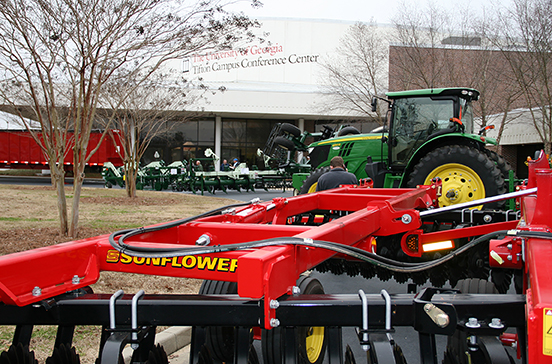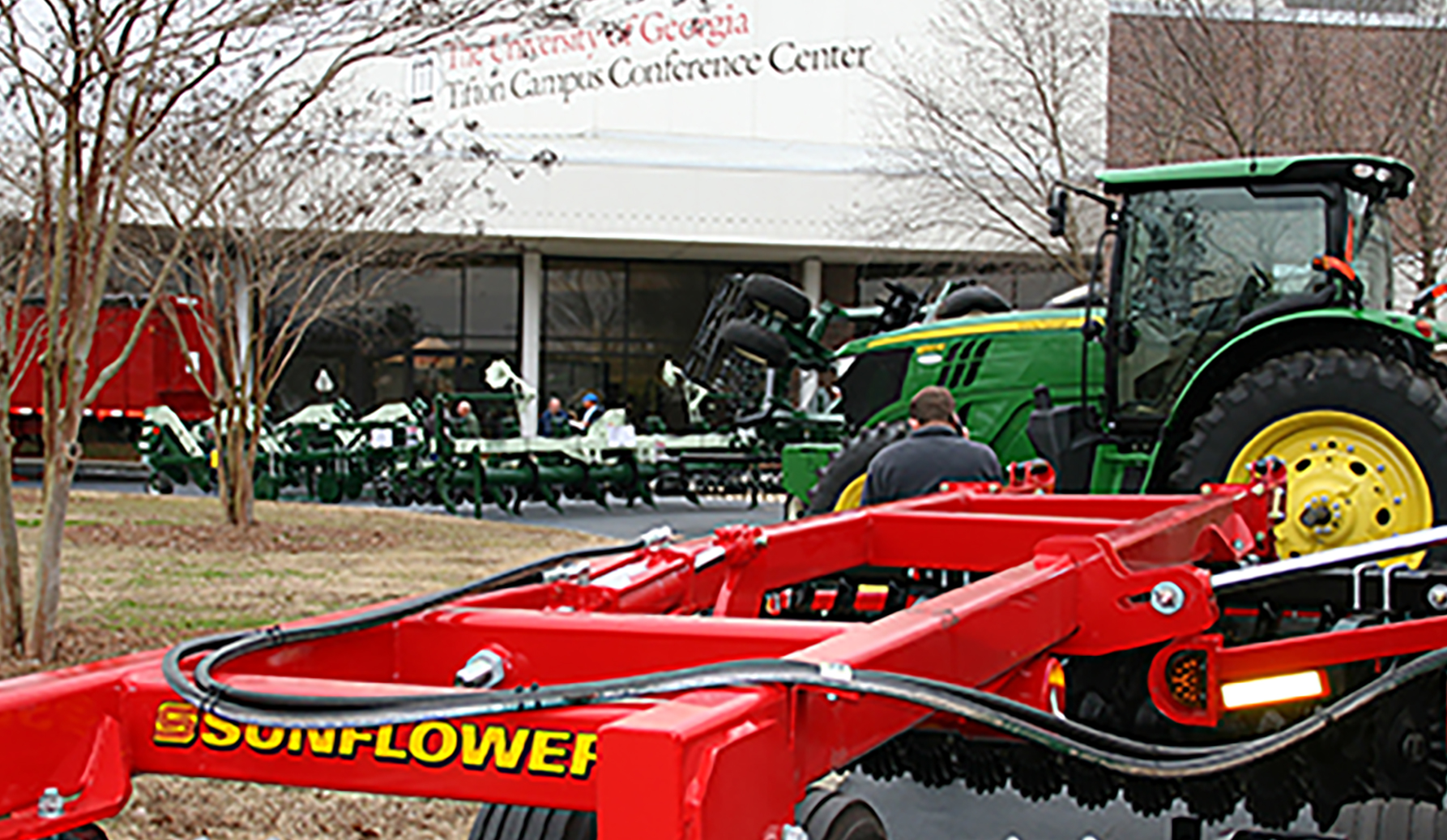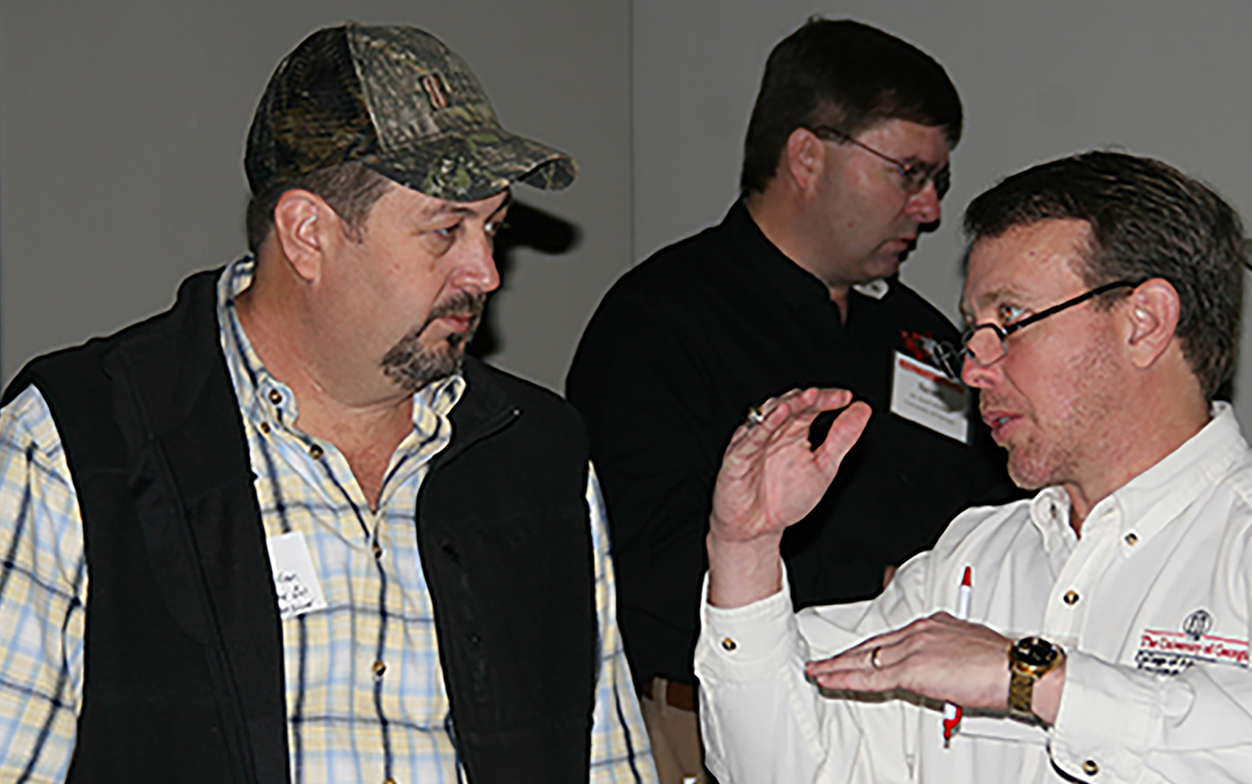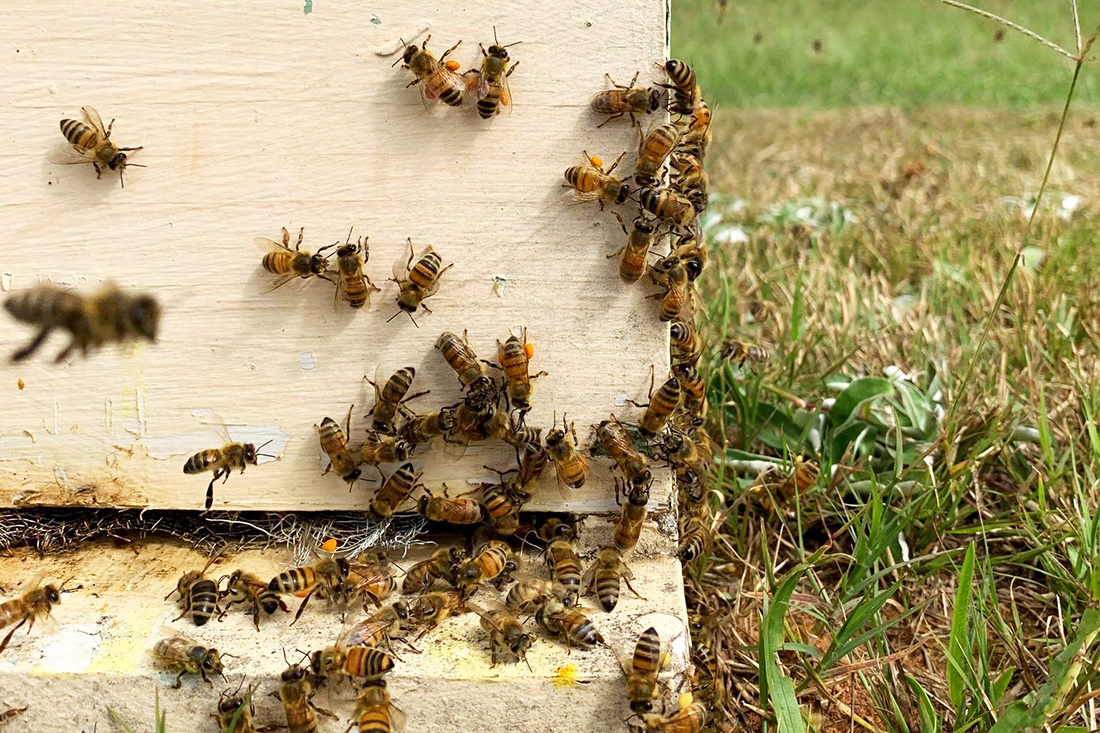Planting season is still three to four months away, but this year’s peanut crop is already on the minds of Georgia farmers. There are many questions left to answer.
Peanut farmers shared concerns about acreage planted, industry impact of the expected increased acreage and the effect on crop rotation during the Georgia Peanut Farm Show, held Jan. 15 at the University of Georgia Tifton Campus Conference Center.
“We need to make sure we try to help them save what little money they can,” said Scott Monfort, UGA Extension peanut agronomist. “The main point here at the farm show is to share information that will maximize productivity while minimizing inputs as much as possible.”
Monfort and fellow UGA peanut team members addressed concerns and supplied answers during UGA’s production seminar, an important element of the farm show. Monfort discussed the key factors farmers should consider in preparing for the 2015 growing season.
Part of that planning includes farmers readying themselves for a drastic increase in state acreage.
“In most years, the information that’s coming out of research and Extension is important. However, with a year like this year, when we know we’re going to increase acres again, and we know it’s going to put a pinch on crop rotations to some degree, and we know prices are going to be somewhat suppressed for all commodities, it’s even more important that we try to share as much information as possible and get that in front of the growers,” he said.
Monfort estimates 650,000 to 700,000 planted acres of peanuts next year, up from the 590,000 acres planted last year and 430,000 acres the year before. More acreage could result in an increased strain on peanuts’ market price, which currently sits in the $400 to $425 per ton range.
Other major questions Georgia peanut growers have to answer are where to put excess peanuts if there’s another big crop and peanuts continue to be grown at these prices, he said.
Like all farmers, peanut growers are at the mercy of Mother Nature. Farmers in Georgia can grow peanuts with irrigation or when enough rain falls. “But if we have another year like we did last year on the non-irrigated fields, it makes it difficult to make a profit year in, year out,” Monfort said.
Half of Georgia’s crop is produced as dryland peanuts, or peanuts grown in fields without irrigation. Many of Georgia’s dryland fields failed to produce last year because of extreme dry conditions from June to August.
Thursday marked the third year UGA has hosted the farm show on its Tifton Campus. Along with information and insight offered by UGA peanut scientists, farm show attendees saw up close the latest technological developments in the peanut industry.
“I think it’s been a good move for the farm show to be held at UGA Tifton. Our facility seems to fit their needs as far as space for the vendors and others. We’re right here at UGA Tifton, and a lot of our scientists are involved with peanut research,” said Joe West, assistant dean on the UGA Tifton Campus.









